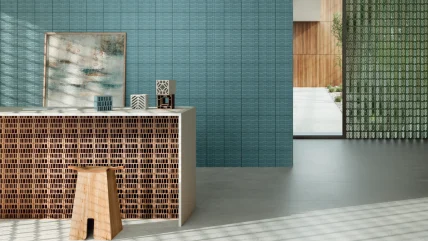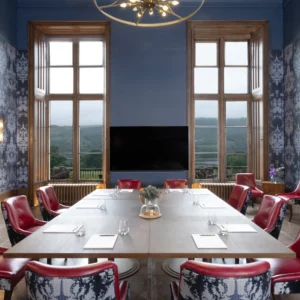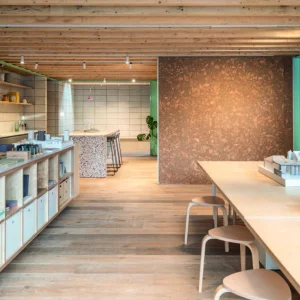
Mirage, the Italian design company specialising in ceramic surfaces for architecture, has launched Terrae x AMDL Circle – a new collection born from a collaboration with the architecture and design studio AMDL Circle.
The new collection is described as ‘a material dialogue where light and matter intertwine in a refined design expression’.
Terrae offers through three main lines: Atmo, Idro and Lito.
Atmo is said to be ‘a contemporary and elegant reinterpretation of the Italian tradition of ceramic tiles’. The surfaces are distinguished by refined embossed graphic patterns that interact with light to create geometric textures and effects of depth and dynamism. Available in 50x120cm formats and 20x20cm square tiles, Atmo offers ‘sophisticated tones that enhance the ceramic texture and define the tactile rhythm of design’.
Idro, meanwhile, is ‘a surface of delicate intimacy, characterised by soft nuances… and infuses spaces with a quiet sense of contemplation’.
Lito, finally, is a tribute to the architectural tradition of ‘moucharabieh’ reinterpreted in a contemporary way. It is made of three-dimensional modules (12x12x10cm) with a sculptural character in extruded ceramic that plays ‘with solids and voids to filter light and create ever-changing visual effects. Lito is not merely a partition element but a defining feature that established a continuous dialogue between light and shadow, evolving harmoniously throughout the day. In this way, ceramics transcend their original function, transforming into an active element that modulates both light and air, blurring the boundaries between interior and exterior, and fostering a fluid, dynamic relationship with the surrounding environment.’
Mirage says that the collaboration between it and AMDL Circle stems from a shared desire to explore the emotional core of architecture and design: ‘They celebrate the earth as the source of life and as a connective element between humans and nature. Terrae is conceived as a collection that goes beyond the mere functional aspect of ceramics – each surface tells a story of memory and meaning, bridging tradition and innovation.’





